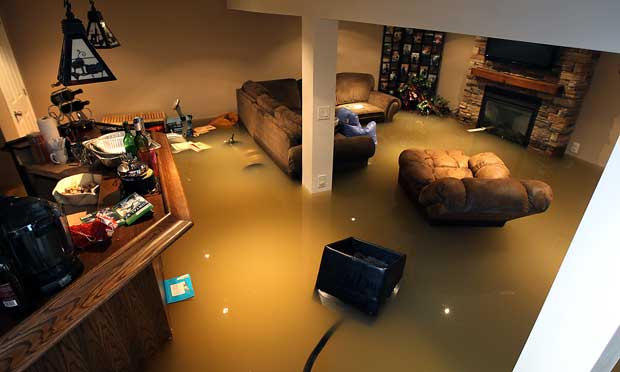- BY mert
- POSTED IN blog
- WITH 0 COMMENTS
- PERMALINK
- STANDARD POST TYPE

Water damage repairs total some $4 to $5 billion per year in the United States. Building repairs from plumbing leaks and burst pipes alone is the third largest home damage cost.
The first and most important thing to know about water damage is that immediate and extremely thorough drying is necessary to avoid further problems. This means that professional services are necessary for any flooding beyond a small spill or overflow that can be mopped up within a few minutes. Otherwise water quickly penetrates to where it can linger for months, causing progressive harm if not properly taken care of. The more wetness there is and the longer it is present the greater the risk of secondary damage that’s not covered by insurance. Significant problems can develop in as little as 24 hours.
We’ve already talked about the sorts of damage that can occur in another blog post (click here), which include health risks from mold and other micro-organisms as well as harming carpet, wood, plaster, drywall, and more. So lets complete our discussion of the basics of water damage with an introduction to the categories of flooding and the steps you need to take.
Categories
International standards categorize flooding into 3 categories based on the source.
- Sanitary sources such as faucets
- “Grey” water from dish washing, clothes washers, and backed up sinks
- Unsanitary “black” water from sewers, rivers, creeks, and so on
Grey water that has been standing for more than two or three days is also considered Class 3.
Flooding is also classified based on the extent of the areas affected.
- Only small areas of concrete or plywood, with little or no wet carpet
- An entire room, including any carpet, with wetness wicking up walls by as much as 1 foot
- Walls, insulation, carpet, and sub-floor saturated
- Water has been present long enough to saturate materials such as hardwood, brick, and stone
While homeowners and business owners may be able to handle problems where both categories are Class 1, black water clearly calls for a sanitation specialist and Category 4 destruction requires thorough building dry out to prevent further harm. For anything else it’s best to begin with a professional assessment.
Solution Steps
If the flooding stems from any sort of plumbing problem the first step is of course if prudent, to shut off the supply. But be sure that electricity is turned off before entering any wet area to remove the shock hazard.
And the 2nd step is to call immediately a 24 hour local Staten Island flood cleaning service, such as Joe Kielbasas Flood Service.
Since insurance company procedures differ, we’ll only cover actual water damage restoration efforts here.
Water damage repair should begin as soon as possible with pump out and an assessment of the extent and nature of damage. That should be followed immediately with as thorough water extraction as possible to minimize dry out time.
This requires specialized equipment. With only Category 2 damage and prompt carpet cleaning, it may be possible to save the carpet and padding, but Category 3 usually means replacing the flooring as part of water damage repair. Category 4 damages then require expert structural drying which can take from one to several days, and the building may still require professional mold remediation. Thorough dry out requires the proper use of several types of equipment, typically including air movers, dehumidifiers, and special heaters together with careful monitoring and adjustments. Finally, licensed contractors can replace or repair all affected building materials.
The key thing to remember is that any flood cleaning needs to be immediate and thorough. In many situations wetness can linger where you can’t see or feel it and hidden problems, particularly mold, can develop quickly. Specialized equipment and training are necessary for proper flood cleanup, so professional services providers such as Joe Kielbasas Flood Service of Staten Island are the best solution.

